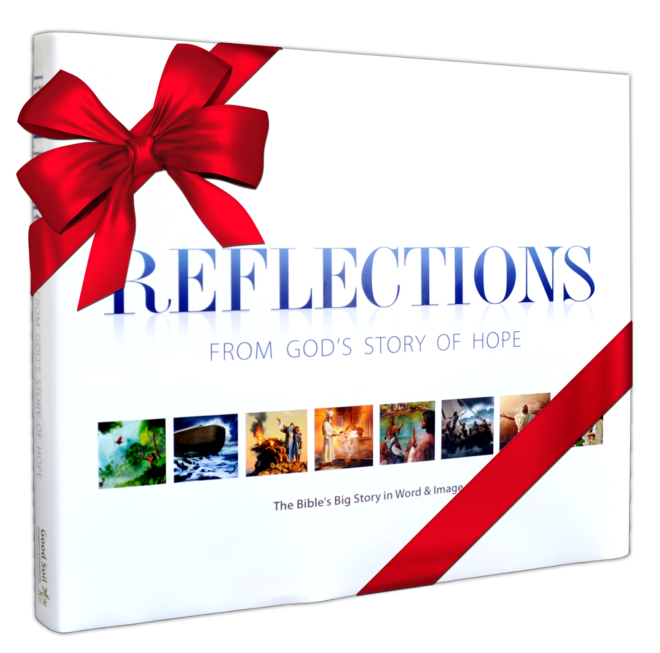Christmas Evangelism – Ten Creative Ideas

The Christmas season should be the easiest time of the year for us to share the good news of Jesus Christ with our friends, family, and neighbors. But, all too often, the busyness of the season suppresses our passion for sharing the true meaning of Christmas with people who need to know it and might be hungry to hear it. Even in a post-Christian culture that has secularized Jesus out of Christmas, there are still many creative ways to non-offensively introduce people to the REAL story beneath the commercialized story. Here are ten of them.
Ten Ideas for Creating a Caring Context in Which to Share the TRUE Story of Christmas
The goal underlying these ideas is to develop or enhance relationships with unsaved friends and neighbors, and create informal Christmas-focused contexts, that will provide opportunities to speak to them about the life-changing message of the Biblical story of the birth of Jesus Christ.
- Open House. Host an open house with Christmas treats, especially for your non-Christian neighbor and friends.
- Cookie and Candy Sharing Party. Organize and host a “treats sharing” get-together for your community. Invite neighbors to bring a batch of their favorite Christmas treats (homemade or store-bought).
- Invite to Dinner. Every year make a point to invite one non-Christian family to your house for a special Christmas dinner.
- Caroling Group. Organize a neighborhood caroling group using mixture of secular and Christian Christmas songs. Plan one carol-sing practice ahead of time and gather in someone’s house for Christmas treats after the caroling activity.
- Birthday Party for Baby Jesus. Especially for children, organize a special “birthday party” with a focus on the birth of Jesus. Plan for appropriate crafts, fun activities, yummy treats, and a story time for telling the Bible’s Christmas story. Get as many of the moms and dads involved as you possibly can.
- Christmas Carol Sing-Along. Invite neighbors and friends to a Christmas “sing-along” in your home. Begin with popular fun Christmas songs, then transition to some of the more widely known Christmas Christian songs. Be sure to provide the lyrics for everyone. Make the setting as cozy and “Christmas-y” as possible. This could be a part of one of the other in-home ideas suggested here or the major focus of the get-together. As is true with some of the other ideas above, try to get as many people (particularly non-Christians) involved in planning and leading.
- Neighborly Treats. Prepare some Christmas treats in attractive containers (tins or decorated boxes or baskets) and take them to the neighbors around you, especially those that you want to develop or enhance a redemptive relationship with. Take your entire family with you, kids included, to deliver them.
- Cheer Up a Neighbor. Think of someone in the neighborhood who has a special need for encouragement—someone who recently lost a loved one, lost a job, has struggled with health problems, etc. Organize neighbors to do something special (a “community Christmas gift”) to help or encourage this person.
- Christmas Email or Letter. Send a special, personalized Christmas message (by email or postal mail) to some of your friends, including a brief version of your personal faith story connected to the Christmas story.
- Invite to Church. If there is anytime in the year than unchurched Americans are open to an invitation to attend church, it is the Christmas season. A recent survey discovered that about 60% of Americans attend church during this holiday season. 57% who do not attend church during Christmastime indicated that they would be likely to attend if invited by someone they knew.
Some General Gospel-Sharing Suggestions
Question: How open and bold should I be in presenting the gospel to my unsaved friends and neighbors in these special Christmas activities?
For sure, you want to avoid the “bait and switch” that unbelievers fear---inviting them to an activity that is nothing more than a thinly veiled guise for a “hard sell” presentation (or “preaching”) of the gospel. That can do more eternal harm than good. On the other hand, you certainly want to create a setting where the gospel may find an unobtrusive opening.

Understanding the Good Soil Receptivity Scale is very helpful in situations like this. Where a person is on this receptivity scale lets you know how clearly and completely and boldly you can be in presenting the gospel. In some cases, your goal may simply need to be to build a better caring and trusting relationship with your non-Christians guests—a relationship that can culminate later in more direct and in-depth gospel presentations.
Also, Good Soil E&D’s worldview onion model will help you know how to move from safe conversations on “human commonality” topics into potentially deeper levels of redemptive conversations.

For example, here are some typical “onion peeling” questions you might ask. As you ask them, look for “entry points” that allow you to naturally and safely ask deeper investigative questions.
- What do you think the world would be like if the Bible's Christmas story had never happened?
- Have you ever thought much about the non-commercial meaning of Christmas?
- Have you ever wondered why so many more people go to church at Christmas than any other time of the year?
- What does the story of Baby Jesus mean to you?
- Did your family have any religious traditions at Christmas time?
You might consider giving your unsaved friends, neighbors, and relatives a “gospel gift,” such as Reflections from God’s Story of Hope. Our goal in creating this beautiful Bible story coffee table book was to make it so attractive that even gospel-skeptics would want to have it in their living room—and that has happened.

More Help
This Personal Evangelism and Discipleship page of the Good Soil website provides a lot more information that will be helpful as you seek to share Christ with your loved ones and neighbors at Christmas time.




